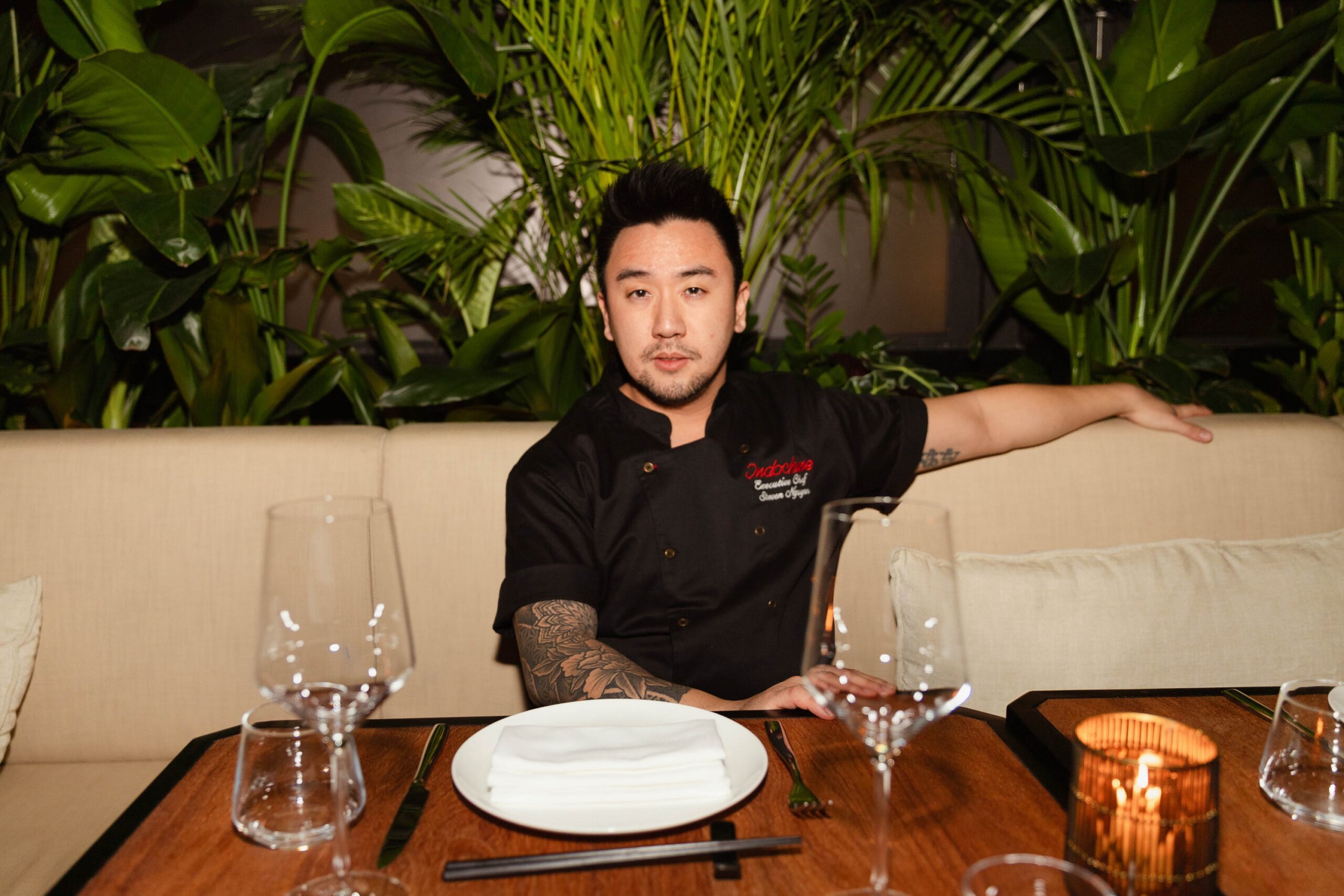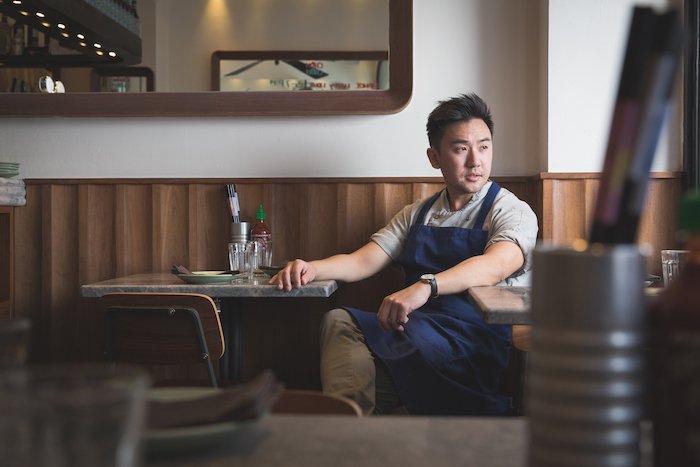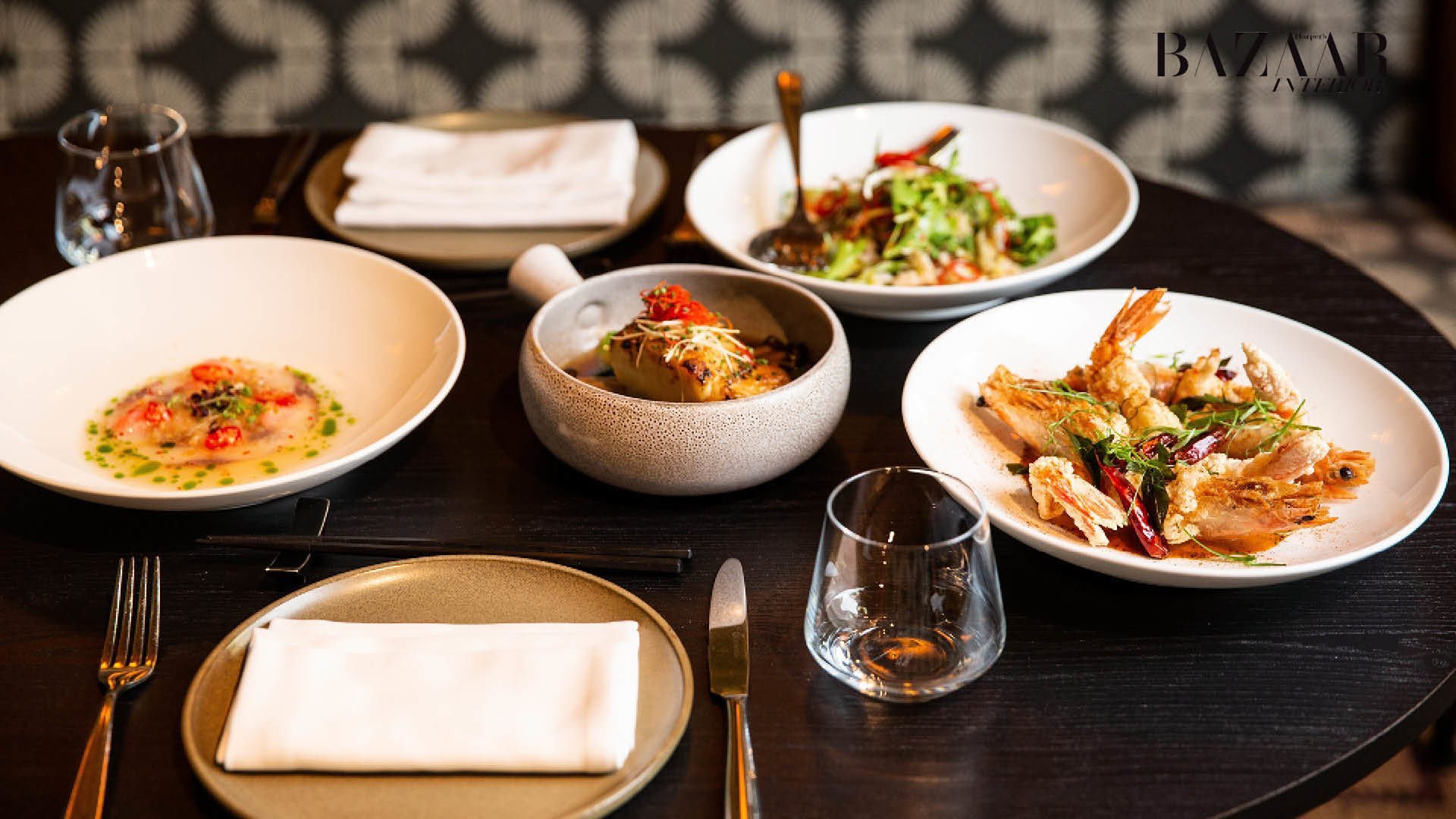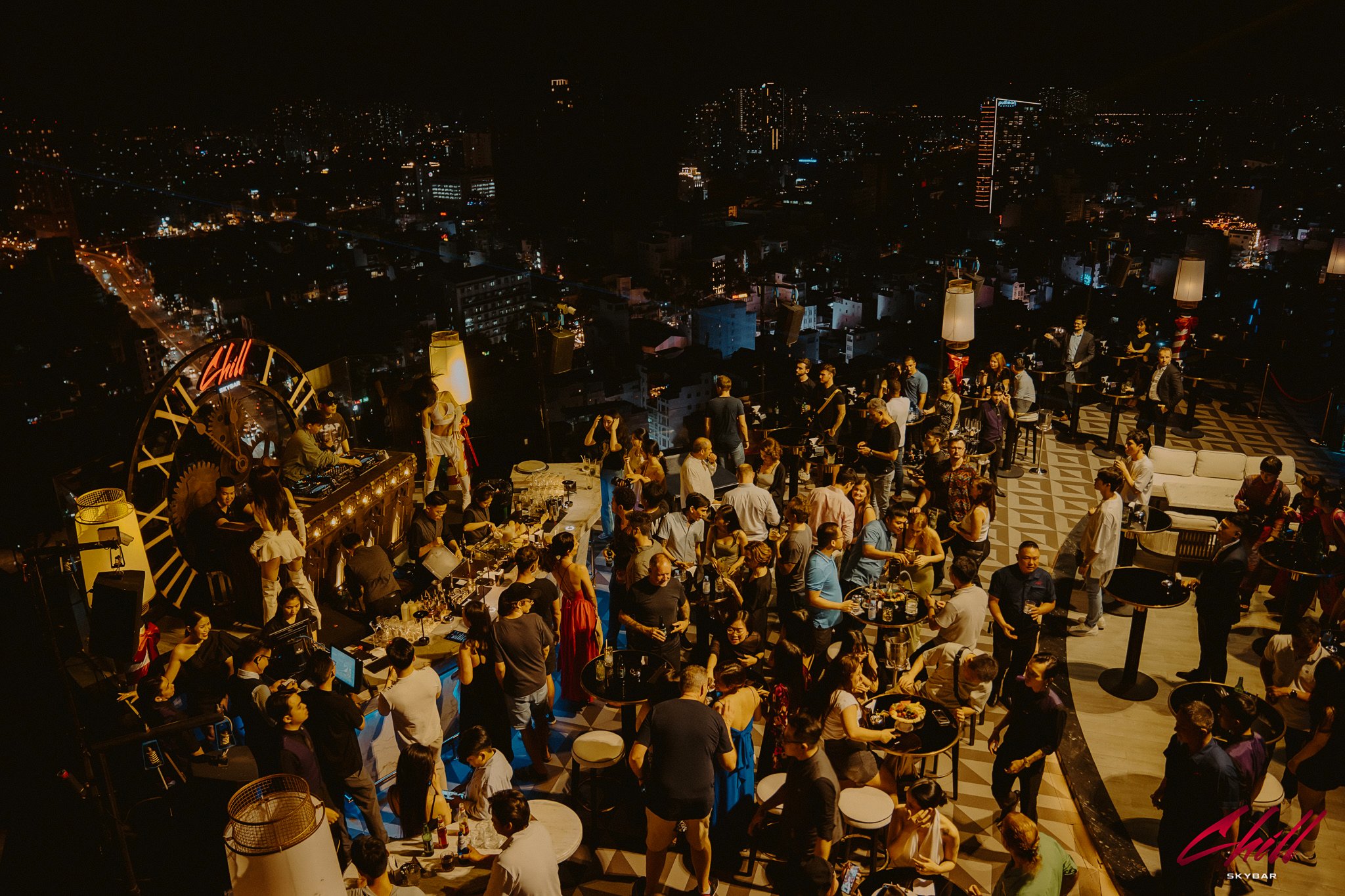Meet chef Steve Nguyen of Indochine - MENA 50 Best’s only Vietnamese Restaurant
2022 marked MENA’s inaugural 50 Best Awards with a list of some of the region’s most noteworthy and deserving establishments. Having lived and cut my teeth in Dubai’s food and drink industry for more than 5 years, I personally witnessed the impressive journey of many of these restaurants from opening to the top of the list. One such restaurant is Indochine, a sleek and stylish restaurant serving up big and bold plates of French-Vietnamese fare in a chic and cosy setting.
Indochine is the Middle Eastern outpost of the original Indochine, an iconic New York establishment with a 35-year history serving French-Vietnamese fare to some of the city's most prominent patrons in music, fashion, and art. True to its roots, the Dubai branch features tropical-inspired interiors, lush greenery and a groovy repertoire of beats. It is helmed by Executive Chef Steve Nguyen, a Canadian-Vietnamese native who spent a week learning and absorbing from the team in the Big Apple before putting his own spin in Dubai.
Going Deep with chef Steve Nguyen
Originally from Toronto, Steve’s parents were Vietnamese refugees who left the country after the war and arrived in Canada in 80’s. Like many chefs, Steve’s culinary calling came after the 2008 financial crisis rendered his marketing and advertising qualifications irrelevant. Faced with job insecurity and scarcity, Steve found his way back to school and behind the kitchen counter at George Brown College in Toronto where he spent two years carving out his new career.
Despite a rough initial segway, Steve’s culinary career quickly kicked off and he soon found himself honing his craft Terroni Italian restaurant group, Auberge Du Pommier, and Lindsey Shaw Catering. Amongst his slew of achievements, one in particular which saw Steve as a part of the co-founding team at Otto's Berlin Doner and Ottos' Bierhalle in Toronto led to a call to move to Hong Kong to lead the kitchen at Chom Chom Vietnamese restaurant for Black Sheep Restaurants hospitality. There, he married his culinary experience with his cultural heritage to create Hong Kong’s finest Vietnamese flavours and dishes.
Not soon after, Steve found himself answering another call, to lead the kitchen once again for an exciting new project in Dubai - Indochine, an iconic New York establishment with a 35-year history serving French-Vietnamese fare to some of the city's prominent clientele in music, fashion, and art.
Chef Steve’s relationship with Vietnamese cuisine
From young, Steve’s food-related memories stemmed from watching cooking shows. One in particular that he recounts fondly is ‘Wok with Yan’ - a Chinese cooking show that entailed a cheeky wok-related pun by chef Stephen Yan. This got his wheels turning from a young age. Of course, being Asian and indulging in tri-generational weekend brunches and cooking alongside his Vietnamese mother, grandmother and aunts also helped. Soon, he found himself cooking family meals on Christmas and New Year’s.
However, Steve admits to being ambivalent to Vietnamese cuisine growing up and leaned towards Western food in his younger days in an attempt to fit into Western culture. “The strong flavours of fish sauce and fermented foods that are now trending were previously misunderstood or uncommon to the general palette” he says.
Everything changed when Steve was exposed to mom and pop pho restaurants that not only served the ubiquitous noodle soups, but also more unknown and obscure dishes such as Com Tam, Bun, and Banh Mi. This initial discovery quickly snowballed into a deeper appreciation for traditional Vietnamese Classics like Bun Bo hue, banh cuon, canh chua and well let’s just say the rest is history.
Today, Vietnamese cuisine and traditional recipes form the bedrock of Steve’s culinary creations and serve as a way for him to understand, learn and come to terms with a heritage, culture and country that he never had firsthand experience living in. More importantly, it is a vehicle for Steve to write his own story of where he’s from and where he wants to go.
Bringing Vietnamese cuisine to the world
Vietnam has one of the largest diasporas in the world (there is an estimated 4.5 million overseas Vietnamese) and Steve believes that it’s inevitable and part of our evolution for cultures, cuisine and practices that have been forced into diasporas to adapt to their new surroundings to survive and eventually thrive. Such an example is the popularity and ubiquity of Vietnamese-American staples such as like Viet-Cajun crawfish and Garlic noodles.
Steve warns that chefs should be careful about “doing fusion for the sake of doing fusion”. He believes as long as the foundation of fundamentals is preset and there are similarities between flavours profiles - it can work.
While the success of the aforementioned Vietnamese-influenced creations lends itself as a catalyst for the growth of fusion dishes, Steve warns that chefs should be careful about “doing fusion for the sake of doing fusion”. He believes as long as the foundation of fundamentals is preset and there are similarities between flavours profiles - it can work.
A good example is Escargot since both French and Vietnamese cultures consume snails in one way or another. At Indochine, Steve adopts a classic French style of service with the compound butter but with a Vietnamese twist using lemongrass and lime instead of garlic and parsley. On the sweet side of things, Pastry Chef Clio Andriopoulou plays with modern and contemporary French desserts with a Southeast Asian infusion and in Steve’s words “she really nailed it”. Today, the Passionfruit Tartlet is a menu staple at the award-winning establishment.
When creating a dish, Steve often asks “how do we make food that is upscale without being stuffy and also not move too far away from what would be considered authentic? What I really hope to achieve is food that is honest, genuine and pays respects to past recipes without taking them as a gospel.”
What does the future hold?
For a long time, Steve has admired Japanese cuisine for its ingredients, discipline and skill required. Thus, he made the decision to study Japanese cuisine at the Sushi Chef Institute in California in an attempt to find philosophies and techniques that he can incorporate into his current practice. Another philosophy Steve is looking to adopt is ‘nose-to-tail butchery’ and preservation techniques of dry-ageing fish to ultimately prolong its use, change its texture and enhance its flavour. The result is also less waste as a result of maximising yield from fish.
With new knowledge comes new experimentation yet one thing remains - Steve’s drive to progress Vietnamese cuisine and bring it to a more mainstream forefront. “I hope people will begin to see that Vietnamese food can be world-class and that it’s only the beginning.”


















Like what you read?
Discover Vietnam’s coming-of-age food and drink scene with one of our tours and experiences exclusively available at Saigon Social